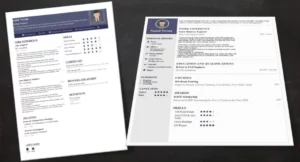What is High Friction Surface Treatment? 5 Important Points
- By
- Pooja |
- March 26, 2021 |
- Civil Engineering, Highway Engineering, Innovation,

Table of Contents
What is high friction surface treatment?
Aggregates for High friction surface treatment:
Binders for high friction surface treatment:
High Friction Surface treatment specification:
Polymer binder resin system requirement:
High Friction Surface treatment application:
Curing and removing Excess aggregate:
High Friction Surface treatment products:
High Friction surface cost: (5)
Alternative to High Friction Surface treatment:
What is high friction surface treatment?
High friction surface treatment is one of the surface retention methods in which very high-quality aggregates are applied to the pavement along with polymer resin binders to maintain the pavement friction for the distressed pavements.
High Friction Material:
In general, the materials that are used for High friction surface treatment are hard and durable in nature, polished and abrasion-resistant. The components used for High friction surface treatment are described below.
Aggregates for High friction surface treatment:
The widely used aggregates for High friction surface treatment is calcined bauxite. As it is having very high skid resistance compared to other types it is high recommendable where the accidents are prone to happen. Other aggregates like basalt, granite and flint are also can be used for preventive maintenance where there is a low risk of accidents were present.
Recent studies are suggested using blast furnace slag as an alternative to these high friction surface treatments.
- Calcined bauxite is having peculiar characteristics like low aggregate abrasion value (maximum 20%) and very high aluminium content (minimum 86%). (1)
- The aggregate gradation for Calcined bauxite is very fine and the range follows as maximum size is 3 to 4 mm and the minimum size is 1mm.
- The aggregates should always be stored in dry conditions so that the bonding with the binder will be very strong.
Binders for high friction surface treatment:
Numerous types of binders used for High friction surface treatment are Polymer resin binder, Epoxy-based binder, methyl methacrylate-based binder, polyester-based resins and polyurethane-based resin etc.
Polymer resin binder:
The basic function of these binders is to strongly hold the aggregate in its position by mixing with them. Traditional bitumen binders are relatively softer in nature when subjected to higher summer temperatures whereas these polymer binders having an advantage over them in this case.
- The major characteristic features of the polymer resin are having reasonable viscosity so that it can be spreadable without being too sticky.
- It should have adequate gel time for proper mixing with the aggregates used.
- The rate of curing should be faster so that it be open to traffic quickly.
- The resin should consist of good flexural strength so that it can avoid cracking.
- It should be adhesive in nature so that it can hold onto the aggregate and the pavement surface.
- The resin should be hard enough to take the shock loads from the traffic.
- It should be water-resistant so that it can avoid moisture-related damage.
Epoxy-based binder:
These types of binders will have high durability and bond strength. They have a longer curing time compared to other types of binders and can be applied for temperatures lower than 600F.
Polyester based binder:
These are having higher bond strength and moderate to high curing times depending on the additive used.
Polyurethane based binder:
These are having moderate to higher bond strength and durability. May be applied at lower temperatures.
High Friction Surface treatment specification:
Materials procured for high friction surface treatment are mainly polymer resin binders and aggregates. Specifications for these materials are as follows. (2)
Polymer binder resin system requirement:
Polymer binder used for high friction surface treatment is having the following specifications: (2)
| Property | Test Method | Requirement |
| Viscosity | ASTM D-2556 | 7-30 poises |
| Gel time | ASTM C-881 | 10 minutes min |
| Ultimate Tensile Strength | ASTM D-638 | 2500-5000 psi |
| Elongation at breakpoint | ASTM D-638 | 30-70% |
| Durometer hardness (Shore D) | ASTM D-2240 | 60-80 |
| Compressive strength | ASTM C-579 |
1000 psi min at 3hrs; 5000 psi min at 7 days |
| The cure rate (Dry through time) | ASTM D-1640 | 3 hrs max |
| water absorption | ASTM D-570 | 1% max |
| Adhesive strength @24 hrs | ASTM C-1583 | 250 psi min or 100% substrate failure |
Aggregates Specifications:
Specifications of Aggregates used for high friction surface treatment are as follows: (2)
| Property | Test Method | Requirement |
| Aggregate Grading | No. 6 Percentage Passing 95% min. No.16 Percentage Passing 5% max. | |
| Aggregate Abrasion Value Loss at 100 rev. | LA Abrasion ASTM C-131 | 10% max. |
| Aggregate Acid Insolubility | Tex-512-J | Greater than 90% |
| Aggregate Magnesium Soundness | Tex-411-A (Stockpile gradation) | 30% max. |
| Aluminium Oxide Content | ASTM C-25 | 87% min |
High Friction Surface treatment application:
High friction surface treatment can be applied to both flexible and rigid pavements.
- The quantity of resin binder should be adjusted so that overall film thickness should in a series of 50-65 mils.
- The overall objective is to achieve 50% embedment depth of aggregate, if the quantity is too low the aggregate will be prone to ravel, if it is too high then the material will be wasted, and surface texture also will be decreased.
- The yield rate of a binder depends on the surface texture and before fixing the binder-resin rate the surface should be thoroughly examined. The typical yield rate varies between 25-32 sf/gal.
- First, the resin binder is applied to the surface and immediately aggregates should be spread across the binder within no time (less than 30 seconds), leaving no wet spots.
- The rate of application is generally between 12-15 lbs/sq. yd.
- Recovered aggregates can only be used if they are dust-free and they should be mixed with new aggregates in a 2:1 ratio (two parts of new aggregates mixed with one part of reused aggregates)
Curing and removing Excess aggregate:
- The curing time depends on the type of resin binder and its temperature used for mixing with the aggregate.
- After curing is done the excess aggregates should be swept and can be reused if it is useful.
High friction surface treatment technology addresses various onsite issues and is mainly used in the following:
- Bridge decks
- Interchanges ramp surfaces
- Junctions/Intersections with huge volumes
- Selected black spots over the entire alignment.
High Friction Surface treatment products:
Based on the adopted polymer binders and aggregates applied high friction surface treatment products are: Epoxy high friction surface treatment and Methyl methacrylate (MMA) High friction surface treatment. Both these types are very rapid in terms of curing and having high durability and bond strength.
High Friction surface cost: (5)
- The cost for high friction surface treatment varies based on numerous factors like the size of the project, labour cost, transportation cost etc.
- Aggregates or crushed stone used for High friction surface treatment are generally expensive and costs around $350- $500 per ton. Overall cost majorly depends on binder and installation charges for high friction surface treatment.
- Overall costs for high friction surface treatment varies from $19 per SY to $35 per SY.
Alternative to High Friction Surface treatment:
Following are various other surface treatment techniques that serve as an alternative to high friction surface treatment. They are chip seal and/ or micro-surfacing.
- chip seal and/or micro-surfacing are mainly used for pavement restoration rather than increasing the surface friction like high friction surface treatment.
- Binders used for chip seals are asphalt emulsions and for micro surfacing polymer modified bitumen, crumb rubber modified bitumen (CRMB) kind of binders can be used.
- Aggregates used for chip seal and micro surfacing are crushed stone aggregates or fine and coarse aggregates.
I hope the blog provides you with adequate knowledge of High Friction Surface Treatment and its associated features. Please feel free to like, share and comment.
P. Dinesh Kumar LinkedIn Profile Please see our Pillar Post to know why we founded gcelab.com.
References:
(1)https://www.fdot.gov/docs/defaultsource/materials/pavement/performance/ndt/documents/hfstguidelines.pdf (2) https://ftp.txdot.gov/pub/txdot-info/cmd/cserve/specs/2014/spec/ss4013.pdf (3)https://safety.fhwa.dot.gov/roadway_dept/pavement_friction/high_friction/ (4) http://dot.state.mn.us/research/TRS/2018/TRS1802.pdf (5)https://www.fhwa.dot.gov/innovation/everydaycounts/edc-2/pdfs/fhwa-cai-14-019_faqs_hfst_mar2014_508.pdf
Read More:
-
Pre-stressed Concrete, Pre-tensioning and Post-tensioning: 3 Important Points
- What is Green Concrete? 7 Important Point
-
Schedule of Work in Construction Contract: 5 Important Points
-
Preamble and Preliminaries in Construction Contract- 5 Important Points

Pooja
Founder at gcelab.com, Pooja is an Entrepreneur unlocking human potential. Working in the Principles of Lean Start-up, Pooja believes in Transparency and User Happiness the most. Pooja’s background in teaching gives her a sophisticated grasp on even the most tedious aspect of course building. She is passionate about people who believe that good is not enough.

